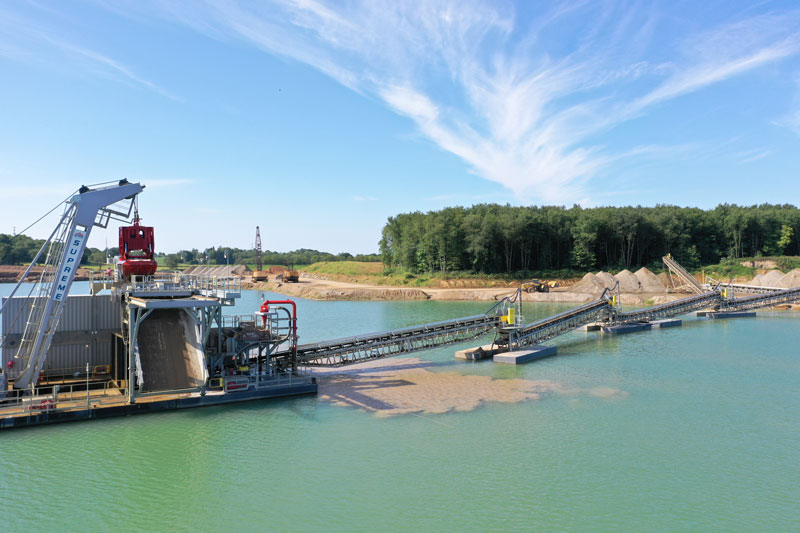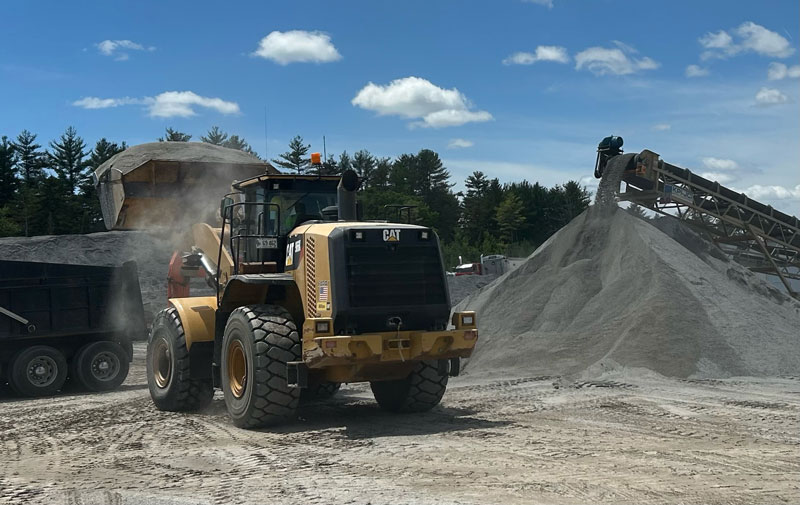A new year brings new opportunities for the dredging market.
Emerging technologies and recent mergers and acquisitions are positioning dredge manufacturers well at the start of 2025.
“Automation is a word that we all hear every day, but the necessity can vary depending on the industry,” says Elliot Archibald, director of business development at LJ Inc., which acquired Supreme Manufacturing in 2024. “The focus on automation has been further advanced by being able to benefit from advanced dredge automation programming.”
Archibald says a dredge with this automation has already been commissioned for Lakeside Sand & Gravel in northeast Ohio. A lot goes into the development and implementation of autonomous technology, he adds.
“Automation in the aggregate industry has come about, for the most part, as a solution to fill the gap created from a lack of manpower and, additionally, to fulfill other goals such as increased efficiency and early warnings of equipment failures,” Archibald says. “[Another] top priority is safety. The more that can be done to remove operators from potentially hazardous work environments is something that will always be the main focus.”
That’s not the only job Supreme Manufacturing has taken on of late. Archibald says the company recently commissioned the largest dredge it’s ever built.
“That dredge will be placed into service at a marine limestone quarry in Florida,” he says. “[This is an application] where clamshell dredges were, for the most part, not considered a viable solution but now, as aging fleets of dragline excavators become obsolete, clamshell dredges have found their way to the forefront of viable alternatives.”
Richard Crowe, U.S. general manager and group COO at InnoDredge Group, is equally excited about what integrating autonomy into dredging means for the market’s 2025 outlook.
“Industry leaders such as Luck Stone and Heidelberg Materials are actively exploring the use of autonomous equipment and recently invested in advanced quarry automation technologies,” Crowe says. “Similar autonomous systems for dredging operations – new or old – are now able to offer a next-level solution that aligns with the industry’s broader move toward automation and smart technologies. This convergence of technology and demand for operational efficiency bodes well for the dredging market in 2025.”
Another development that has Crowe excited this year is that companies are looking to capitalize on recent growth. Additionally, he sees customer demand for maximizing material reserves as a driver of the market this year and beyond.
“For heritage and existing sites, as permitting processes remain complex and time-consuming, operators are increasingly focused on maximizing what they have,” Crowe says. “This is where dredging becomes a critical tool. By adding depth to existing operations, dredging helps companies unlock additional reserves, thereby extending the life of their assets and improving return on investment.”
Customers wanting to get even more out of their dredges is music to Archibald’s ears. He has high hopes for the year ahead and looks forward to meeting customers’ goals.
Says Archibald: “As the industry – as well as the consumer – continues to ask for more out of our dredges (higher production and deeper digging), it is incumbent upon us to not just respond to those needs, but also to anticipate those needs and have solutions readily available for them for faster implementation.”












